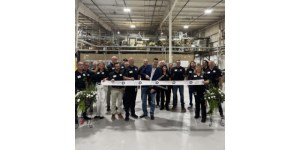Tapping quarry in Rome could help drought; still has drawbacks
Published 11:07 pm Saturday, January 12, 2008
ATLANTA (AP) — While the state of Georgia continues to endure a water crisis, a quarry tucked behind Berry College sits filled with six billion gallons of water.
But college officials say they cannot offer water from their abandoned 80-acre open pit, even though it could help sustain Atlanta for nearly six weeks.
“We’d be happy to sell excess water, but we can’t sell any because we don’t believe we have excess,” college president Stephen Briggs said. “We’re sitting on 6 billion gallons of water, but that water also holds up our campus.”
Quarry water can’t be shared with neighbors because any significant drawdown could create sinkholes large enough to swallow a dormitory, college officials said. The quarry and the college sit atop an aquifer with underground springs and streams spread like tentacles underneath the campus.
When the water table drops low, the soft, limestone ground below the campus sags. Sinkholes appear — as they have over the past 25 years, nearly draining an on-campus lake and badly damaging the student center.
The quarry holds one-tenth of the amount of water in Lake Allatoona, and it’s not being used while the state is currently enduring an epic drought.
With the Oostanaula and Etowah rivers, Rome “is not in danger of running out of water,” said Jerry Jennings, a tenured psychology professor at Berry who also is chairman of the Northwest Georgia Regional Water Resource Partnership.
Jennings also said he’s not pleased that Berry’s quarry water may not be available to the public down the road.
“As a private landowner, they have the right to make the decisions as far as use of that water,” he said. “But it would be helpful to Rome and the county as drought protection.”
Berry officials also said they need the quarry’s water to supplement their reservoir. The private college also plans to add 600 thirsty students.
“A lot of communities statewide are trying to manage their own water needs,” Briggs said. “So we want to make sure we’re protecting our water source in the future like everybody else.”





